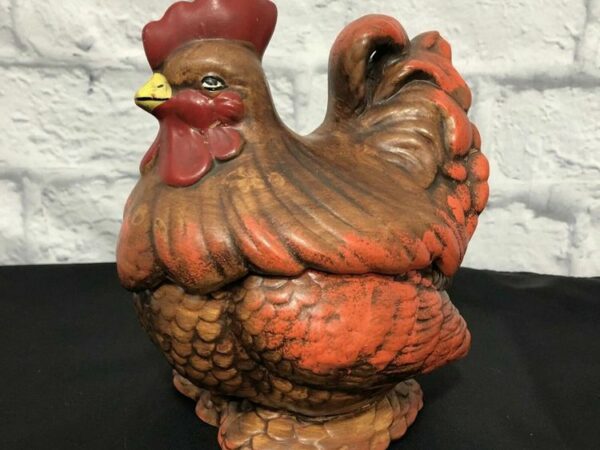Last month, I went to my friend’s house, where I met his younger sister. She was 12 years old and had a hobby of collecting porcelain figurines. She showed me her figurine collection; she had over 30 of them!
One of them looked exceptional, and I wanted the same for my sister. So I asked her about the name of that figurine, and she told me it was a Goebel figurine.
Upon researching them, I discovered they are precious, especially the Hummel figurines. However, it is difficult to identify the real one, and I couldn’t stop doing extensive research on it.
Do you also own a porcelain figurine or want to purchase one and are curious to learn how you can identify it and what its value is? Well, you have come to the right place. I have gathered all the relevant information about Goebel figurines, their identification, and their value.
Table of Contents
History of Goebel Figurines
The Goebel Company is the one that manufactures these figurines. They are widely known for their Hummel figurines. However, they also have other products, including porcelain figurines.
Franz Goebel and his son, William Goebel, were this company’s owners. Bavaria was the region in which they started this company. After a century, it became one of the biggest companies in Bavaria, Germany.
In the beginning, they focused on manufacturing porcelain dinnerware. Nevertheless, with the pace of time, when Franz Gobel’s son, William Goebel, wanted to bring a change and introduce something different and artistic, he changed the company’s direction.
He changed the company’s name to W. Goebel Porzellanfabrik and started manufacturing other products that reflected his artistic sense. The products included their initial figurines, vases, dolls, and lamps. However, after the death of William Goebel in 1911, his son Max started to run the company with his new strategies.
Before taking over the company, Max lived in the United States. As a result, he learned about the American market and how a business should run. When Max started to run his father’s company, he used all his prior knowledge to expand the business. Furthermore, he initiated marketing his products in Germany and other countries.
His company’s output improved when Max hired some of the top sculptors in Europe to improve his company’s production. Nevertheless, he never compromised his product’s quality at any cost. Apart from this, the company purchased some of the artworks from other artists to use them to make more artistic decorative figurines
One of the best and most famous of their figurine collections was based on the drawings of a Franciscan nun named Maria Innocentia Hummel. Furthermore, this company expanded after WWII and started to manufacture toys.
Moreover, they met with Walt Disney in 1952, and after that, they started to manufacture the product line of Disney characters figurines. It was also one of the most successful product lines of this company.
- Goebel Porzellanfabrik is still running today and is producing one of the finest porcelain goods. If you want to know more about this company, you can directly visit their website.
Identification of Goebel Figurines
To identify a Goebel figurine, it is essential to know its type. The company has produced various lines of Goebel figurines over the years. In this section, you will read about their most popular collections.
1. Hummel Figurine
The Hummel Figurine is one of the most popular series of the Goebel company. Consequently, they have the highest value of all their collections. As we have already discussed, this figurine was based on the design of a French nun, Sister Maria Innocentia Hummel. Nevertheless, before she became a nun, her name was Berta Hummel.
Sister Maria Innocentia was an art graduate, and when she became a nun, she started to draw rosy-cheeked children, now known by her last name.

2. Red Heads and Blonde Series
The Red Heads and Blonde series started in 1957 and ended in 1988, based on the work of Charlot Byt.
The Red Heads collection has more than 100 figurines. The Blonde figurine collection has 16 models.
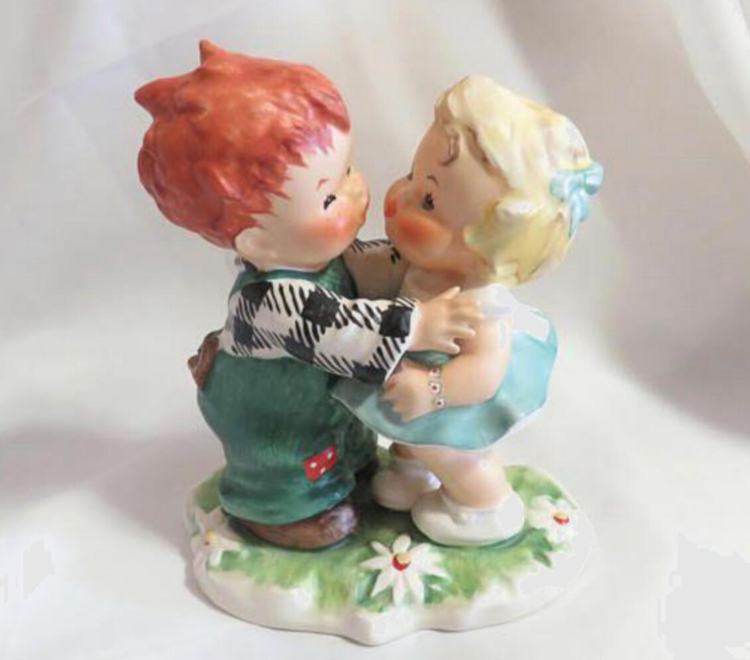
3. Flower Children
Flower Children figurines, also known as Blumenkinder, are usually girls holding spring flowers in their hands, with other details. The flower children are miniature wood figures.
The company hired folk artists from the Erzgebirge region of Germany to make these figurines by hand and paint them. Also, the two famous brands with whom the Goebel company collaborated were Wendt Und Kuehn and Blank.
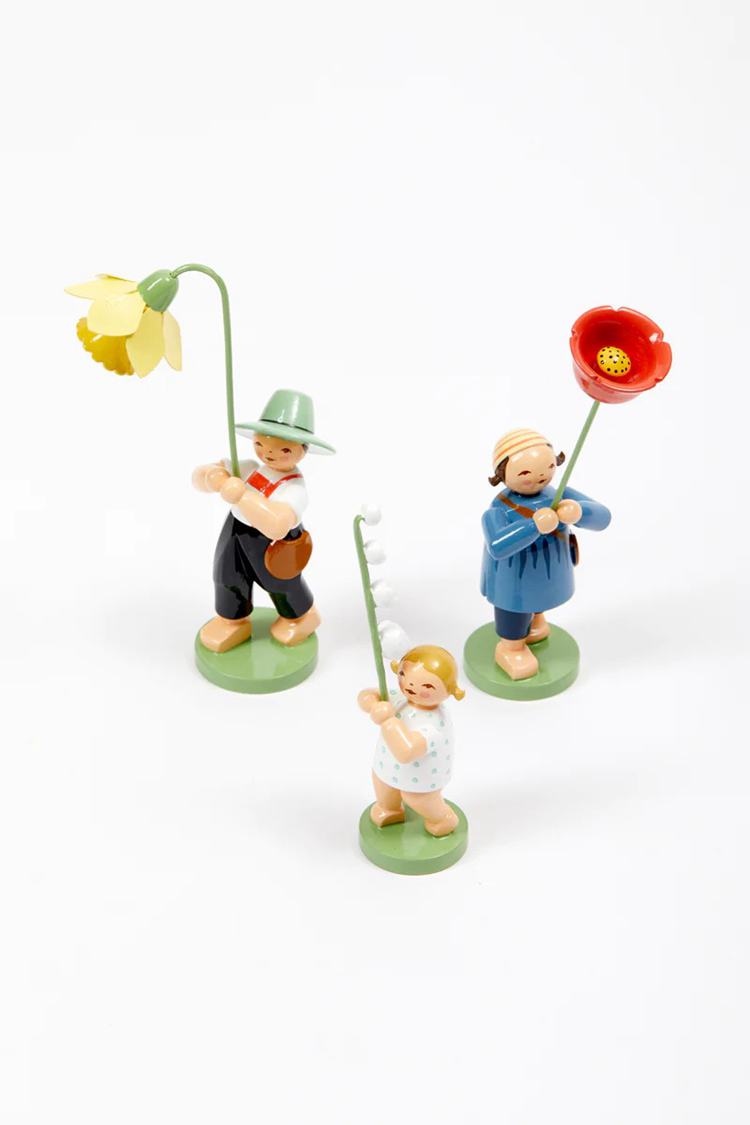
4. Co-Boy Figurines
Another well-known series is the Co-Boy figurines, similar to elf and gnome characters. This collection started in 1871 and ended in 1987. Co-boy figurines originated in Coburn town, from where they got their name.
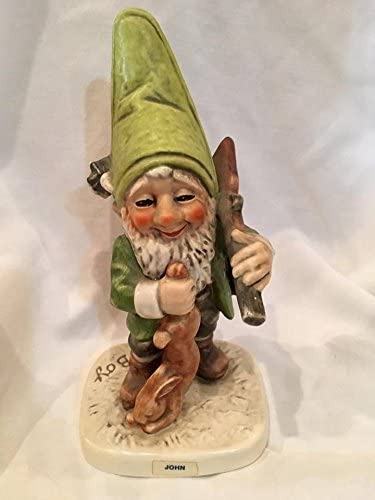
Other Ways to Identify Goebel Figurines
As you now know some of the types of Goebel figurines, you have to understand how you can learn about Goebel figurines identity and their value. You can either know them by their number or by their name.
Every Goebel figurine has a number on its base, which can be hand-painted, stamped, or inscribed. The number tells you about the particular design you can see on the company’s product line. Also, the number has 1-4 digits.
However, you should be aware of the imitation marks, as many companies tried to make Goebel figurines with different materials, such as the Plaster of Paris. When encountering any such model, you should feel they are much lighter than the original figurines. Therefore, you should remain cautious while identifying and learning about their material.
In addition, you can identify them by using the figurines’ names. Nevertheless, it is difficult to learn its value only through its name, as many models exist in a single series.
Apart from this, real Hummel marks include the signature of Maria Innocentia Hummel on the base.
Timeline of the Goebel Marks
The most authentic way to identify a Goebel series is through Goebel marks. Fortunately, there is a track record of Goebel figurines and their marks. It makes it easier to learn about them by verifying the pattern from the company’s catalogue.
All the genuine Goebel figurines have trademarks on the bottom of them. Below are the marks of the Goebel series with their years of production.

1. TMK-1 (1935-1949)
From 1935 to 1949, the Goebel company used trademark number 1 (TMK-1) below the figurines. It also had a logo of crown marks to honor the founder, William Goebel. In addition, the products made after World War II for export had specific stamps to indicate that they were made in Germany’s occupied zone.
2. TMK-2 (1950-1959)
In the second period in the 1950s, the Goebel company started to incorporate the design of bee marks. It is known as the TKM-2. The pattern included the bee sitting inside a V in different styles. From 1956 to 1959, the company made various changes to the bee’s size and shape.
3. TMK-3 (1960-1972)
The period from 1960 to 1972 is known as TMK-3. During these twelve years, they included the design of bees in different styles, similar to the latter period. Along with this logo, they also had the inscription “W. Germany” to highlight the location where the company was producing the figurines. The Goebels were not on the Communist side. Therefore, they want to show this through that mark.
4. TMK-4 (1964-1972)
From 1964 to 1972, the company used different variants of the same bee from their latter periods. Also, the TMK-3 and TMK-4 were running alongside. The only difference between TMK-3 and TMK-4 is that in TMK-4, there are three lines of inscription.
5. TMK-5 (1972-1979)
Trademark 5 (TMK-5) ran for seven years from 1972 to 1979. This period is known as the last period for the bee mark. In this period, the company started to mention its name on the figurines.
6. TMK-6 (1979-1990)
This 6th series started from 1979 to 1990. This period has the most simple design of all the series. The Goebel company removed both the v and bee from the design. The logo of Goebel’s name was the only name left on the figurines.
7. TMK-7 (1990-1999)
This period started in 1990 and ended in 1999. At that time, Germany’s unification was happening. Therefore, the company paid homage to this unification, and while considering it, they added a crown under the company’s logo.
8. TMK-8 (2000-2008)
It was the last series of Goebel figurines, which lasted from 2000 to 2009. The company removed the crown in this series and replaced it with the bumble bee. After this period, they did not create any Goebel figurines.
A company started to make Hummel figurines with the same signature as Maria Innocentia Hummel’s signature. However, the original Goebel company is not linked with this company.
Goebel Figurines Value Guide
Every Goebel figurine is valuable. However, it could be a difficult task if you have a Goebel figure and want to learn about its value. Since their value is associated with many factors, including the series to which they belong. However, below are some factors from which you can judge the estimated Goebel figurines values.
- Age of Goebel Figurines:The first thing you can judge your figurine’s value is its age. Figurines that the company produced in the late 19th century are precious. The company cannot make them again. Due to this reason, they have more value, and people love to collect them.
- The rarity of Goebel figurines:if you have a Goebel figurine that comes from a rare product line in which only a few figurines are made, it is one of the most valuable products. For example, the
company has produced small quantities of the “Picture Perfect” Hummel figurine. Therefore, these figurines are worth more in the eyes of collectors.
- Condition of the Goebel Figurines:The condition of your figurines also plays a vital role in increasing or decreasing their value. If any figurine has scratches or some pieces are missing, it would have a lower value. However, if it is in average condition with packaging, it will have a higher value.
- Goebel Figurine Series:The series to which the figurines belong is essential to know its value. The figurines will have more value if they are from a famous series.
Since you now know how you can identify the Goebel figurines, next comes the part of the most valuable figurine. In the Goebel product line, Hummel figurines are the most valuable ones. So let’s have a look at them.
1. Merry Wanderer – $20,000-26,000
One of the most well-known figurines in the Goebel series is the Merry Wanderer figurine. The company produced it in 1935. It illustrates a boy holding a bag in one hand and an umbrella in the other hand. Also, the boy seems happy and has a posture as if he is walking in the fields, thus his name, Merry Wanderer.
As this figurine became the most famous, the company reproduced it many times. Moreover, this figurine came in various sizes. For the 100th anniversary of Goebel in 1971, Gerhard Skrobek made a six-foot figurine. In 1987, he also made an 8-foot figurine, and the company placed it at their New York headquarters.
The Merry Wanderer is loved by many, and every figurine lover wants to own it as it is scarce. Therefore, it is one of the most valuable Goebel figurines. The estimated market cost of this figurine is $20,000-26,000.
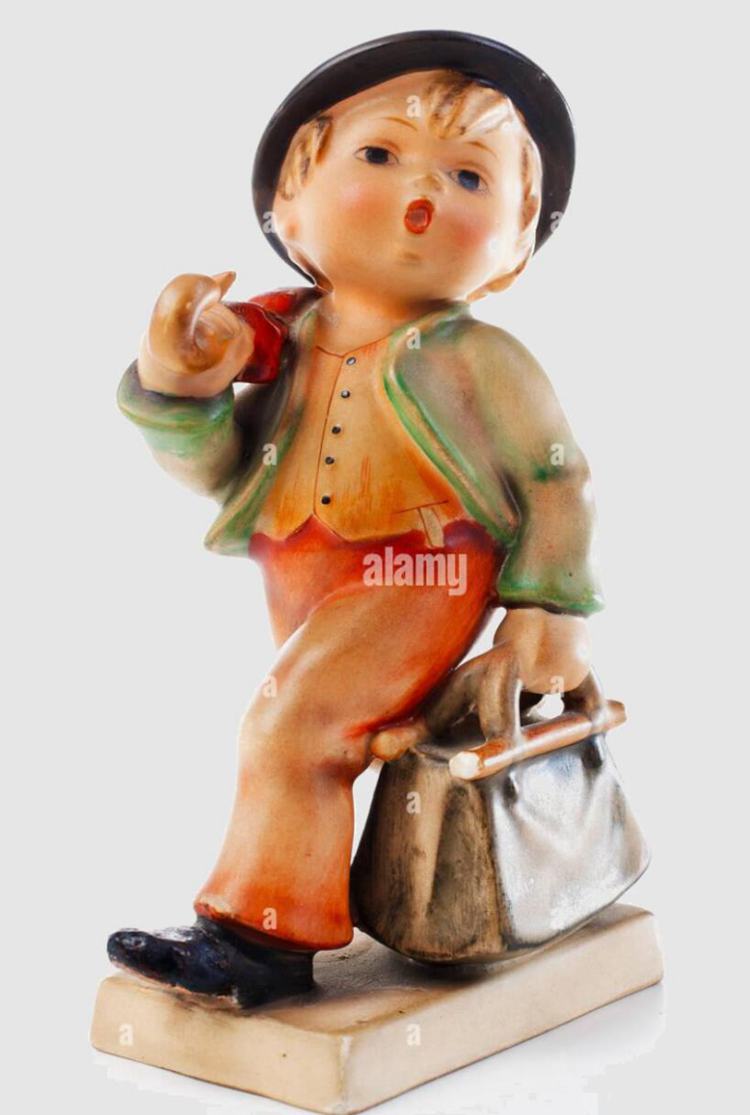
2. Apple Tree Girl and Apple Tree Boy – $22,425
The Apple Tree Girl and Apple Tree Boy are some of the most famous figurines by Goebel. They both are sitting on different apple tree branches. The boy is holding the stem, and his face is facing forward. On the other hand, the girl’s face faces the right side, and her body faces the left side. The company produced these two figurines in 1968.
People get both of these figurines together. They came in 3 sizes: 3.5 inches, 6 inches, and 10 inches. The first two sizes have a market value of more than a hundred dollars, whereas the last one has a value of more than a thousand dollars.
Apart from this, the company made rare models sized at 32-inches. The estimated market value of these figurines is $22,425.
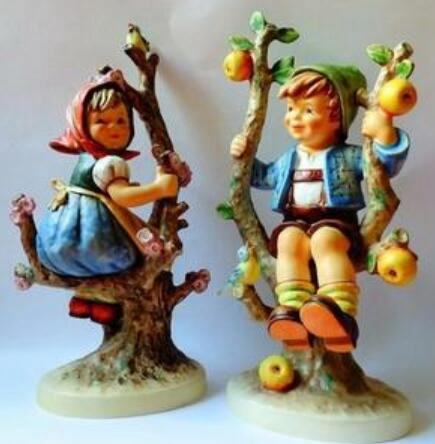
3. Forever Friends – $10,000-15,000
The well-known sculptor Reinhold Unger made this “Forever Friends” figurine in 1940. It initially had the TMK-1 with the crown mark on its base. Also, it had a red terra cotta finish. Friends Forever illustrates two girls behind a fence looking at a swan with three swan babies.
The company did not produce this figurine in bulk. Therefore, it is scarce and has more market value. Due to the enormous demand, the company released only 100 limited-edition models in 2007. However, the figurine with an identification plaque has more value. The estimated price of the Friends Forever figurine is $10,000-15,000.
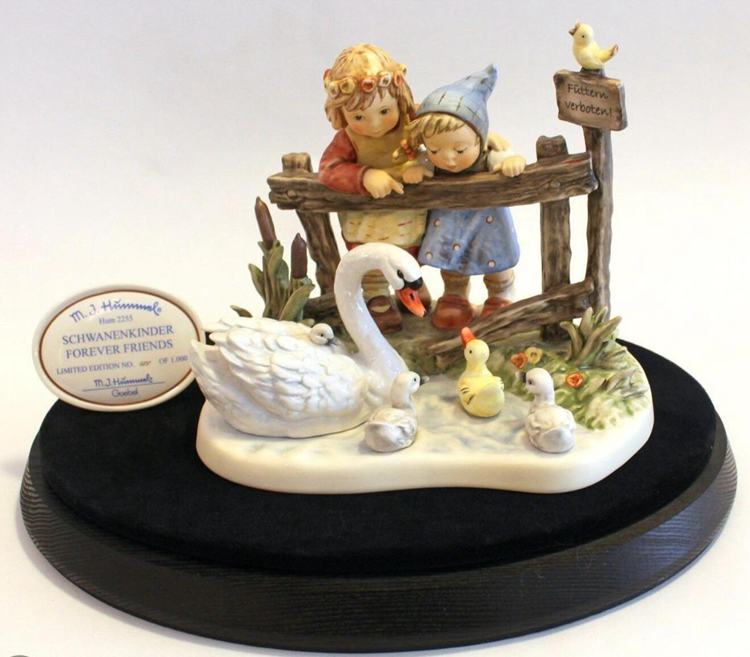
4. Bookworm – $7,500
The Bookworm figurine came onto the market in 1935. It is a part of Maria Innocentia Hummel’s autobiographical series and illustrates her interest in art and learning. It is one of the earliest models of the company. Apart from its age, the makers paid immense attention to its details. Therefore, it is one of the most demanding figurines of all time.
It features a girl wearing a green dress and an apron. She also has a bow tie on her head. She sits with her book on her lap and her hand on her cheeks while looking at the book. The book has a picture of a flower and a duck. This model is from the company’s first series, and the estimated value of this figurine is $7,500.

5. Little Fiddler – $7,500
Little Fiddler is also one of the popular figurines in the Hummel series. It came in 1935 and is also known as the violinist. This design illustrates a boy who is playing the violin. Also, he is wearing a hat and carrying an umbrella.
In 1935, the company produced 50 more models of this figurine. In the beginning, the Little Fiddler figurine was 7¼ inches tall. Moreover, it had a gold-color base. This figurine is similar to the Puppy Love model except for the dog.
Also, the company manufactured the Little Fiddler figurines to celebrate the 50th anniversary of Maria Innocentia Hummel’s figurines, and the mark “50” is on the back of the models. Due to its rarity, it is one of the most valuable figurines, estimated at $7,500.
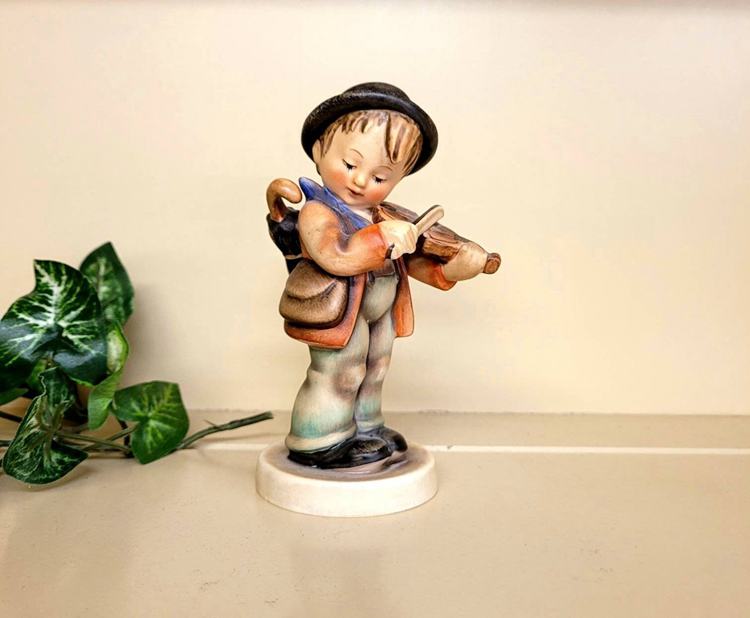
6. Puppy Love – $4,000-5,000
In 1935, Arthus Moeller made this Puppy Love figurine. This model is included in the TMK-1 series as it is one of the earliest models. As stated above, it resembles the Little Fiddler model. It shows a boy playing the violin, and there is a cute little puppy with him who is looking at him.
The boy’s head remained at a different angle in the initial models. Also, he did not have a tie. These figurines were limited editions and were more precious. Currently, their value ranges from $3,500 to $4,000.
Moreover, when the Puppy Love models came into the market as samples, they had an attached pot as they were only samples, and the quantity was limited. Therefore, they have a higher value ranging from $4000 to $5000.
The company produced the Puppy Love figurine after the 1950s had a different appearance, such as the little boy wearing a bow tie and looking down at his shoulder. Usually, the size of these figurines was 5 inches. However, the price would also vary if the height varies from one-quarter inches, as these sizes are rare.
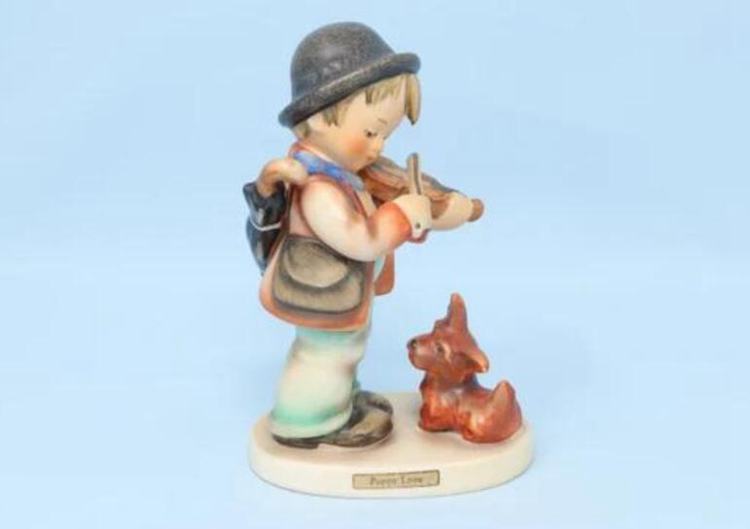
7. Congratulations – $4,500-8,000
The Congratulations figurine came in 1935, and Reingold Unger was its maker. In the beginning, it was called “I Congratulate.”
In the initial figurine, the girl is wearing a blue dress and carrying a flower pot in one hand and a horn in the other, which shows the girl is in a happy mood. Moreover, she also did not wear socks. This figurine is from the TMK-2 series with the bee design.
This figurine underwent some changes by the famous sculptor Gerhard Skrobek. He added other features to this design, such as socks. Moreover, they made the horn’s handle face backward. This design is from the TMK-6 series. The price of this figurine ranges from $4,500 to $8,000.
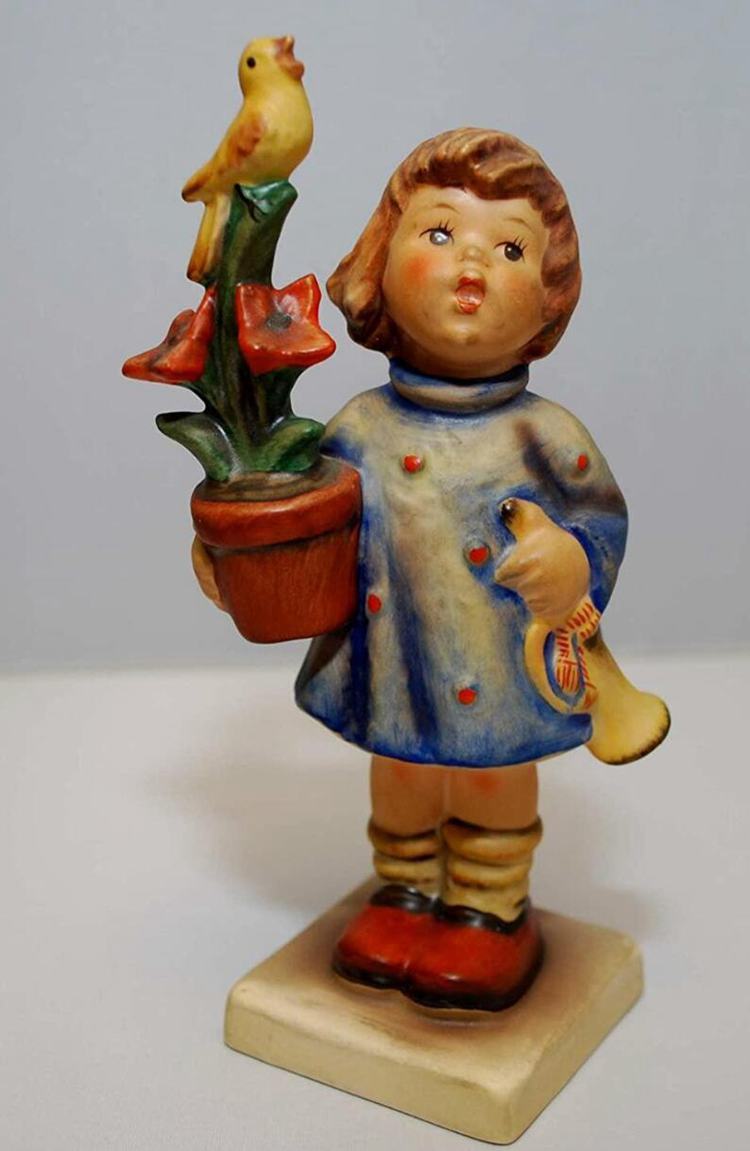
8. Picture Perfect – $3,495
The Picture Perfect figurine’s maker is Helmut Fischer, who made this in 2000. This design illustrates a boy taking pictures of his three friends. It also shows his pets and toys. Furthermore, only 2,500 Picture Perfect figurines are available; due to the lower quantity, they are precious.
The authentic Picture Perfect models have “2000” as their copyright date, and they are made from porcelain plaques and have a wooden base. Also, they came with the TMK-8 mark. Their estimated market value is $3,495.
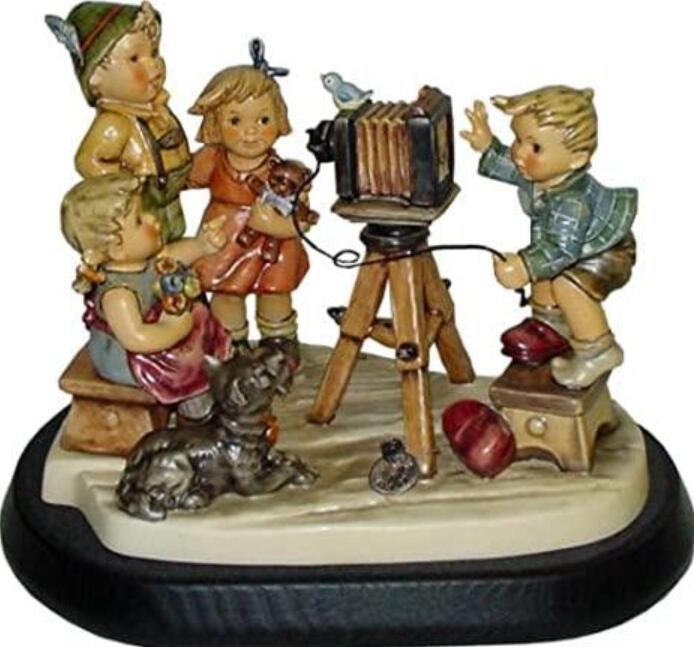
9. Good Shepherd – $2,000-3,000
In 1935, Reinhold Unger made the Good Shepherd figurine. Initially, the little boy wore a light blue gown. But later, the company changed the gown’s color to brown. The boy is illustrated as a shepherd, holding a cane and having two lambs with him.
This figurine is available in sizes ranging from 5.75 to 6.25 inches, and the larger one is 7.25 inches in height. The estimated price of this figurine is $2,000 to $3,000.

10. Ring Around the Rosie – $2,990
The designer of Ring Around the Rosie was sculptor Gerhard Skrobek. He made the design in 1957, but the figurine came onto the market in 1960. It shows four girls playing the game Ring Around the Rosie. It is one of the biggest figurines in the Goebel series.
Their large size made them one of the most valuable figurines. They are not readily available. The estimated market price of the Ring Around the Rosie Figurine is $2,990.

Conclusion
Goebel figurines are one of the most precious and adorable figurines. Many collectors are interested in collecting every rare piece of the Goebel figurine. First, however, one should know how to identify the original model.
The Goebel company has introduced various figurines, and the top ones among them are Hummel, Redhead and Blonde, Flower Children, and Co-Boy. In this guide, we have mentioned all of their details and how to identify them, along with their trademarks.
Apart from this, to know the estimated price of a Goebel figurine, you should consider its age, condition, series, and rarity. If you are interested in purchasing a Hummel figurine, you can choose any of the ten figurines mentioned in this article, as they are the most precious ones.
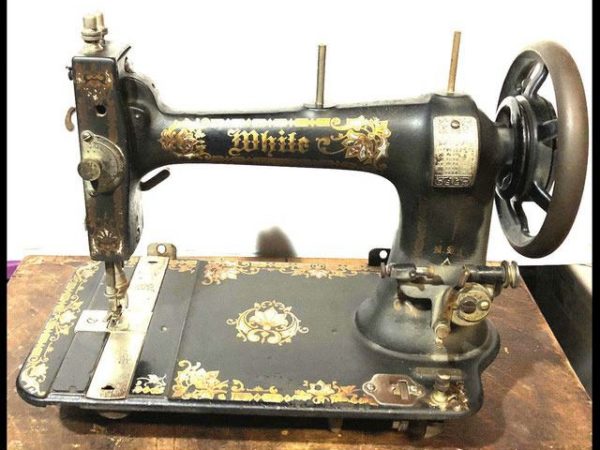

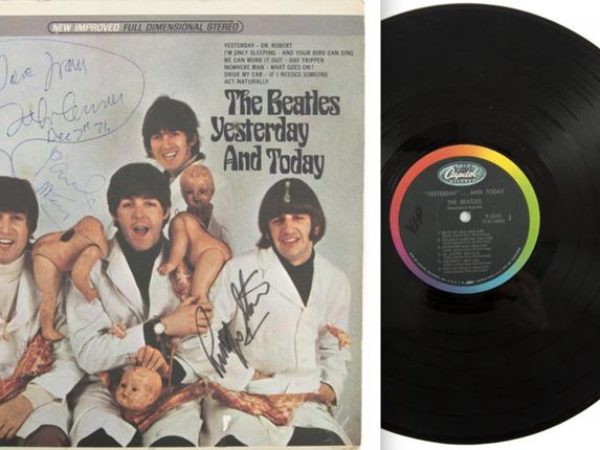

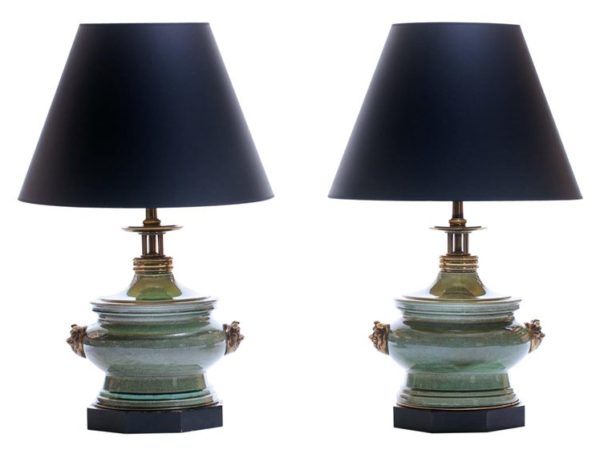
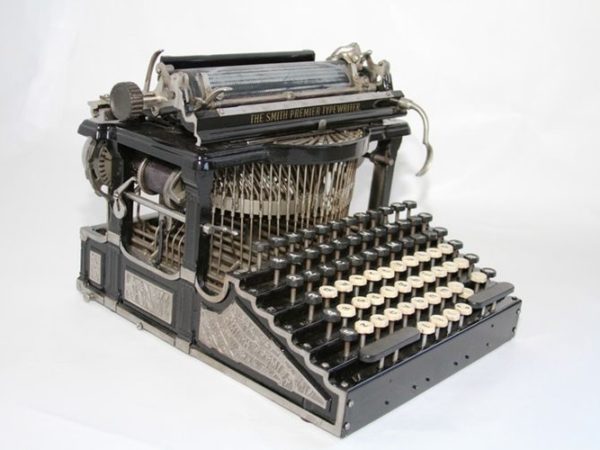
![Vintage Schwinn Bikes: [Types, Identification, and Values]](https://www.txantiquemall.com/wp-content/uploads/2022/05/5.-Schwinn-1967-Ramshorn-Fastback-Stingray-Sky-Blue-vtg-600x450.jpg)
